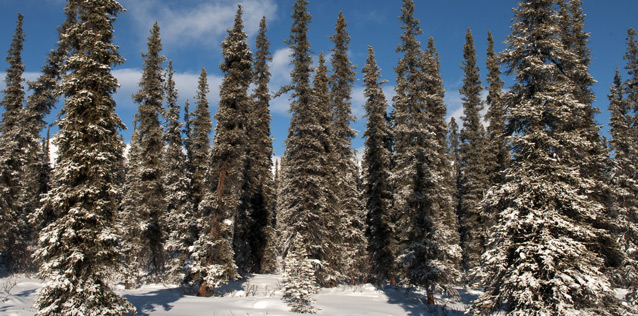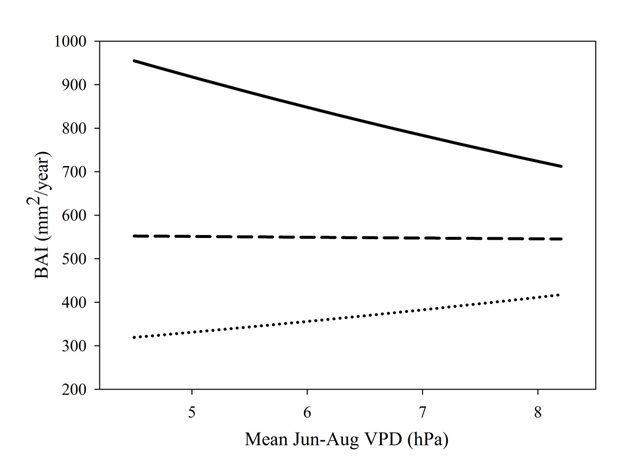
NPS Photo / Tim Rains
Purpose:
Annual growth rings in trees are an archive of past growing conditions. Climate, local site conditions, competition and disturbance influence the growth of trees and information about these variables is encoded in the annual growth rings made by trees. Central Alaska Network vegetation program staff are using this information to answer a wide range of ecological questions such as: how old are the trees in different areas? How long has it been since a major disturbance occurred in a given forest? Where on the landscape are trees growing fastest or slowest? How are tree growth rates changing with a changing climate?
How changing climate conditions will affect tree growth across the variable landscape of Denali is of particular interest. Recent findings in Alaska suggest the boreal biome is shifting in response to changes in climate. It seems unlikely such a shift will occur in a uniform manner over a landscape variable in topography and site conditions, though there is little consensus of how local site characteristics will interact with climate to alter tree growth patterns. A first step in understanding how boreal forest tree species distribution may look in the future is to quantify tree growth response to climatic variability in different topographic and site conditions. That is, how do trees’ growth rates in response to hot, cold, wet or dry climate conditions differ, if at all, when growing in very different site conditions (steep slope vs flat ground, shallow permafrost vs no permafrost, etc.)?
Implementation:
As a part of the CAKN vegetation monitoring plot work, park botanists extract cores from four spruce trees near each monitoring plot (if there are trees to core), which are located in many different site conditions across the parks. To date over 2000 trees have been cored across Denali, Wrangell-St. Elias and Yukon-Charley. The tree ring labs at Middlebury College and the University of Greifswald measured rings and assigned a year to each annual growth ring for the Denali cores. For the Denali tree core project, park staff used tree ring measurements from 500 white and black spruce trees cored from 222 plots sampled in the Denali vegetation monitoring grid. These measurements were used to model the relationship between yearly tree radial growth, climate variables and site conditions.
Results:
Site-specific variables, namely slope angle, near surface permafrost and elevation, strongly modified the magnitude, shape and, in some cases, the direction of growth response to climatic conditions for both species. Highest black spruce radial growth occurred on steep slopes in years with rainfall much higher than average and low vapor pressure deficit (VPD; Fig. 1). Note that low VPD occurs during cool or very wet conditions and high VPD occurs in hot or very dry conditions. Black spruce growing in areas with permafrost accumulated 25% less wood annually and did not benefit from high rainfall compared to black spruce growing in areas without permafrost (Fig. 1).


White spruce growth response to climatic conditions was largely dependent on slope angle and elevation. Highest white spruce growth occurred on flat slopes at low elevations without permafrost in years when Jun-Aug rainfall was a little below average and when VPD values were slightly lower than the 1903-2009 average (i.e. when it was cool, but not too rainy) (Fig. 2). The presence of near surface permafrost reduced white spruce growth by a third. White spruce growth responded positively to Jun-Augrainfall when growing on moderate to steep slopes, but negatively when growing on flat slopes (Fig. 2). Trees at low elevations decreased growth in response to increasing Jun-Aug VPD, while white spruce growing near the limit of treeline increased growth (Fig. 3).

Last updated: April 14, 2016
